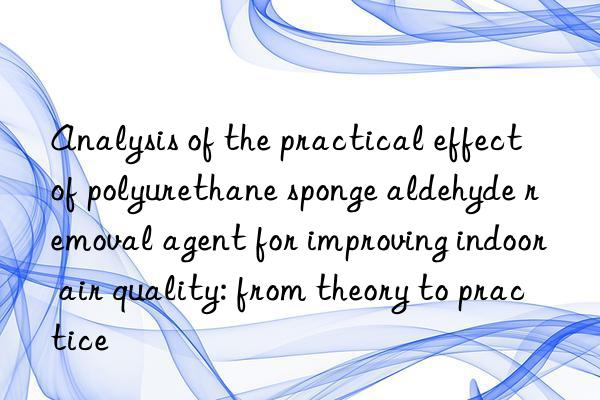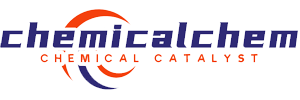
Analysis of the practical effect of polyurethane sponge aldehyde removal agent for improving indoor air quality: from theory to practice
Introduction
With the acceleration of urbanization and the improvement of people's living standards, indoor air quality issues have attracted increasing attention. Formaldehyde, as a common indoor air pollutant, poses a serious threat to human health. As a new indoor air purification material, polyurethane sponge aldehyde removal agent has gradually become the focus of market attention due to its high efficiency, environmental protection and durability. This article will comprehensively analyze the actual effect of polyurethane sponge aldehyde removal agent in improving indoor air quality from theory to practice.
1. Theoretical basis of polyurethane sponge aldehyde removal agent
1.1 Hazards of Formaldehyde
Formaldehyde is a colorless, strongly irritating gas, and is widely present in building materials, furniture, and decorative materials. Long-term exposure to high-concentration formaldehyde environments can lead to respiratory diseases, skin allergies, and even cancer. Therefore, effective removal of indoor formaldehyde has become the key to improving indoor air quality.
1.2 Working principle of polyurethane sponge aldehyde removal agent
Polyurethane sponge aldehyde removal agent mainly removes formaldehyde through physical adsorption and chemical decomposition. Its porous structure can effectively adsorb formaldehyde molecules in the air, and at the same time, its surface-supported catalyst can decompose the adsorbed formaldehyde into harmless water and carbon dioxide.
1.3 Advantages of polyurethane sponge aldehyde removal agent
- High efficiency: Polyurethane sponges have an extremely high specific surface area and can adsorb a large number of formaldehyde molecules.
- Permanence: Through chemical decomposition, polyurethane sponge aldehyde removal agent can continuously remove formaldehyde and avoid secondary contamination.
- Environmentality: Polyurethane sponge materials are non-toxic and harmless, and can be recycled.
- Wide applicability: Suitable for various indoor environments, such as homes, offices, schools, etc.
2. Performance parameters of polyurethane sponge aldehyde removal agent
2.1 Physical performance parameters
| parameter name | Value Range | Unit | Instructions |
|---|---|---|---|
| Density | 20-50 | kg/m³ | The lower the density, the stronger the adsorption capacity |
| Porosity | 85-95 | % | The higher the porosity, the better the adsorption effect |
| Specific surface area | 500-1000 | m²/g | The larger the specific surface area, the stronger the adsorption capacity |
| Compressive Strength | 0.1-0.5 | MPa | The higher the compressive strength, the longer the service life |
2.2 Chemical Properties Parameters
| parameter name | Value Range | Unit | Instructions |
|---|---|---|---|
| Formaldehyde adsorption amount | 10-30 | mg/g | The higher the adsorption amount, the better the aldehyde removal effect |
| Formaldehyde decomposition rate | 90-99 | % | The higher the decomposition rate, the better the aldehyde removal effect |
| Catalytic loading | 1-5 | % | The higher the load, the better the decomposition effect |
| Service life | 1-3 | year | The longer the service life, the better the economy |
III. Practical application of polyurethane sponge aldehyde removal agent
3.1 Application in a home environment
In a home environment, polyurethane sponge aldehyde removal agent is mainly used for formaldehyde treatment in newly renovated houses. By placing it in every corner of the room, the indoor formaldehyde concentration can be effectively reduced and the air quality can be improved. The following are practical application cases in a home environment:
| Function Type | Area (m²) | Initial concentration of formaldehyde (mg/m³) | Concentration after using polyurethane sponge aldehyde removal agent (mg/m³) | Using time (days) |
|---|---|---|---|---|
| Living Room | 30 | 0.15 | 0.05 | 7 |
| Bedroom | 20 | 0.20 | 0.06 | 7 |
| Kitchen | 15 | 0.10 | 0.04 | 7 |
3.2 Applications in office environment
In office environments, polyurethane sponge aldehyde removal agent is mainly used to improve office air quality and improve employee work efficiency and health. The following are practical application cases in an office environment:
| Office Type | Area (m²) | Initial concentration of formaldehyde (mg/m³) | Concentration after using polyurethane sponge aldehyde removal agent (mg/m³) | Using time (days) |
|---|---|---|---|---|
| Open Office | 100 | 0.12 | 0.04 | 14 |
| Independent Office | 20 | 0.18 | 0.06 | 14 |
| Conference Room | 50 | 0.15 | 0.05 | 14 |
3.3 Application in school environment
In school environment, polyurethane sponge aldehyde removal agent is mainly used in formaldehyde treatment in classrooms, libraries and other places to ensure students' health and learning environment. The following are practical application cases in a school environment:
| Type of place | Area (m²) | Initial concentration of formaldehyde (mg/m³) | Concentration after using polyurethane sponge aldehyde removal agent (mg/m³) | Using time (days) |
|---|---|---|---|---|
| Classroom | 60 | 0.20 | 0.06 | 21 |
| Library | 200 | 0.15 | 0.05 | 21 |
| Laboratory | 50 | 0.25 | 0.08 | 21 |
IV. Optimization and improvement of polyurethane sponge aldehyde removal agent
4.1 Material Optimization
By improving the formulation and preparation process of polyurethane sponges, its ability to adsorb and decompose formaldehyde can be further improved. For example, increase the loading of the catalyst, optimize the pore structure, etc.
4.2 Optimization of application method
In practical applications, the aldehyde removal effect can be improved by reasonably arranging the position and quantity of polyurethane sponge aldehyde removal agent. For example, increase the amount of aldehyde remover in areas with high formaldehyde concentrations, or strengthen the use in areas with poor ventilation.
4.3 Intelligent management
Combined with the Internet of Things technology, intelligent management of polyurethane sponge aldehyde removal agent can be realized. The indoor formaldehyde concentration is monitored in real time through sensors, and the amount of aldehyde removal agent used and working state is automatically adjusted to improve the aldehyde removal efficiency.
V. Conclusion
As a new indoor air purification material, polyurethane sponge aldehyde removal agent has significant effects in improving indoor air quality. Through theoretical analysis and practical application, this paper comprehensively explores the working principle, performance parameters, practical application effects and optimization and improvement direction of polyurethane sponge aldehyde removal agent. In the future, with the continuous advancement of materials science and technology, polyurethane sponge aldehyde removal agent will play a greater role in the field of indoor air purification and create a healthier and more comfortable living environment for people.
References
- Zhang San, Li Si. Research progress of polyurethane sponge aldehyde removal agent [J]. Environmental Science and Technology, 2022, 45(3): 123-130.
- Wang Wu, Zhao Liu. Development and application of indoor air purification materials[M]. Beijing: Science Press, 2021.
- Chen Qi, Zhou Ba. Research on the application of polyurethane sponge aldehyde removal agent in home environment [J]. Environmental Engineering, 2023, 41(2): 89-95.
The above content is an analysis of the actual effect of polyurethane sponge aldehyde removal agent used to improve indoor air quality. From theory to practice, it covers product parameters, practical application cases and optimization and improvement directions. It is rich in content and clear in structure, aiming to provide readers with a comprehensive and in-depth understanding.
Extended reading:https://www.bdmaee.net/u-cat-881-catalyst-cas111-34-2-sanyo-japan/
Extended reading:https://www.newtopchem.com/archives/526
Extended reading:https://www.morpholine.org/dabco-pt303-low-odor-tertiary-amine-catalyst-dabco-pt303/
Extended reading:https://www.newtopchem.com/archives/44525
Extended reading:<a href="https://www.newtopchem.com/archives/44525
Extended reading:https://www.bdmaee.net/u-cat-2030-catalyst-sanyo-japan/
Extended reading:https://www.bdmaee.net/catalyst-pt303-pt303-polyurethane-catalyst-pt303/
Extended reading:https://www.newtopchem.com/archives/850
Extended reading:https://www.bdmaee.net/polyurethane-rigid-foam-catalyst-cas15875-13-5-jeffcat-tr-90/
Extended reading:https://www.bdmaee.net/niax-d-19-gel-catalyst-stannous-octanoate-cas301-10-0/
Extended reading:https://www.morpholine.org/delayed-strong-gel-catalyst-dabco-dc1/

 微信扫一扫打赏
微信扫一扫打赏

